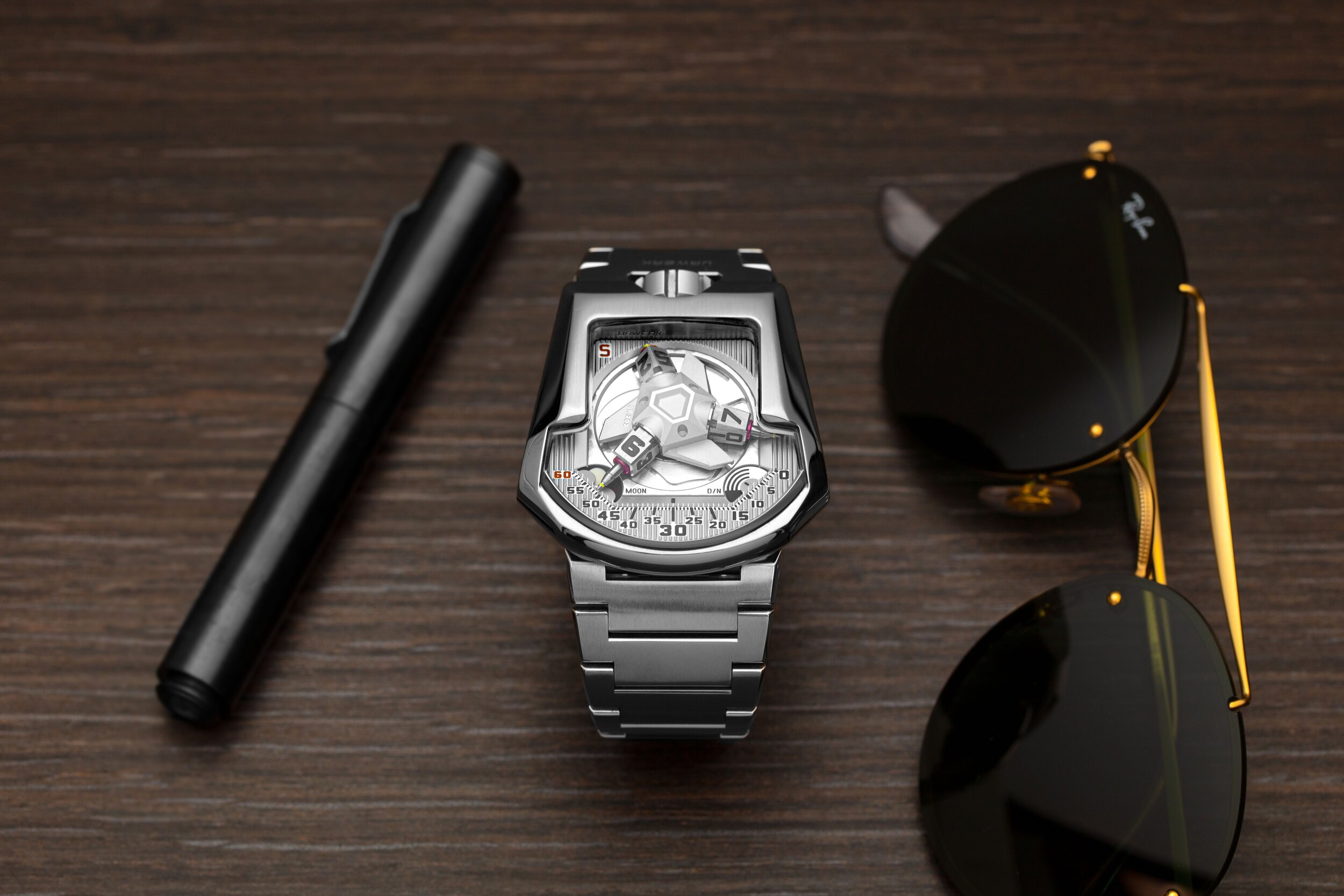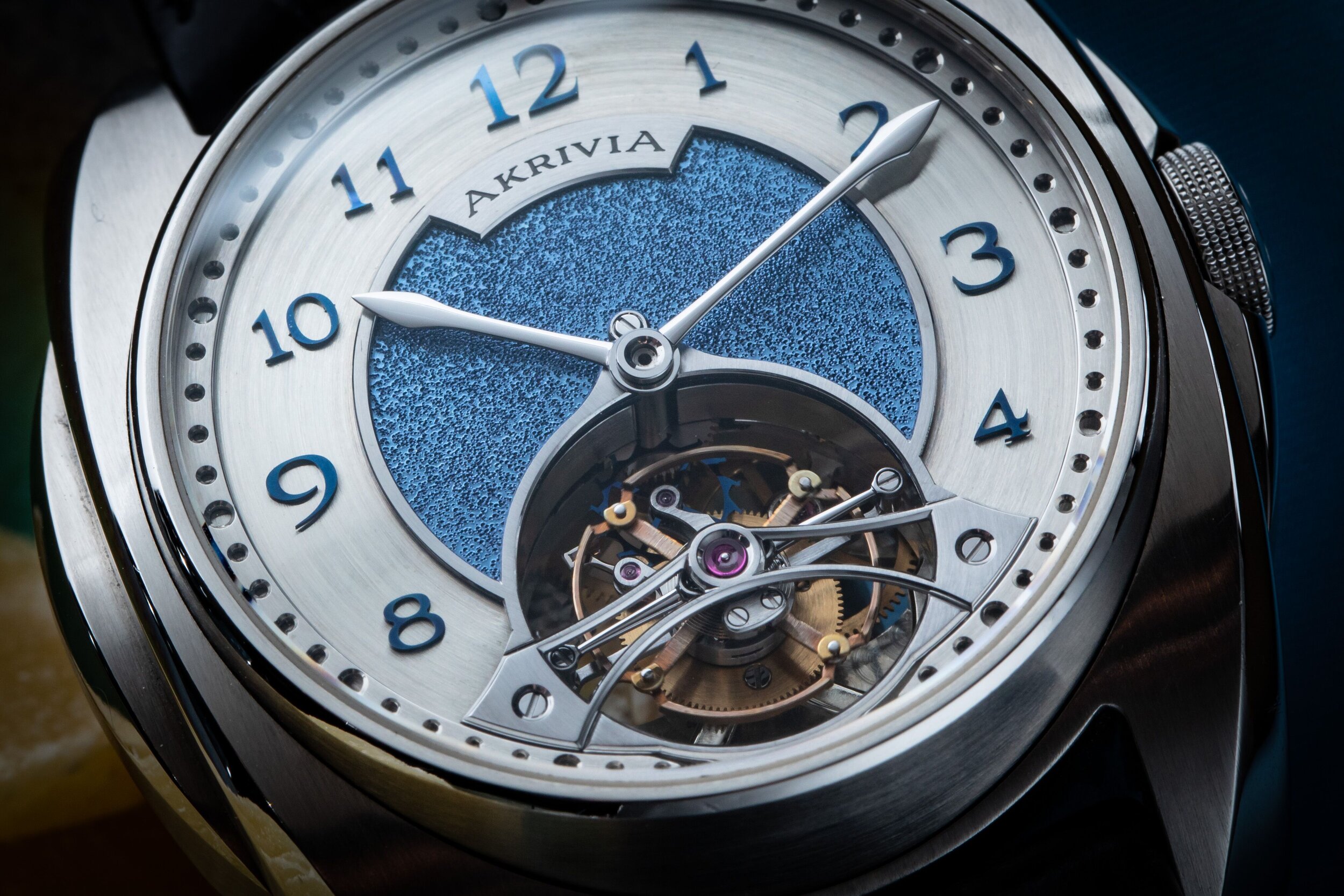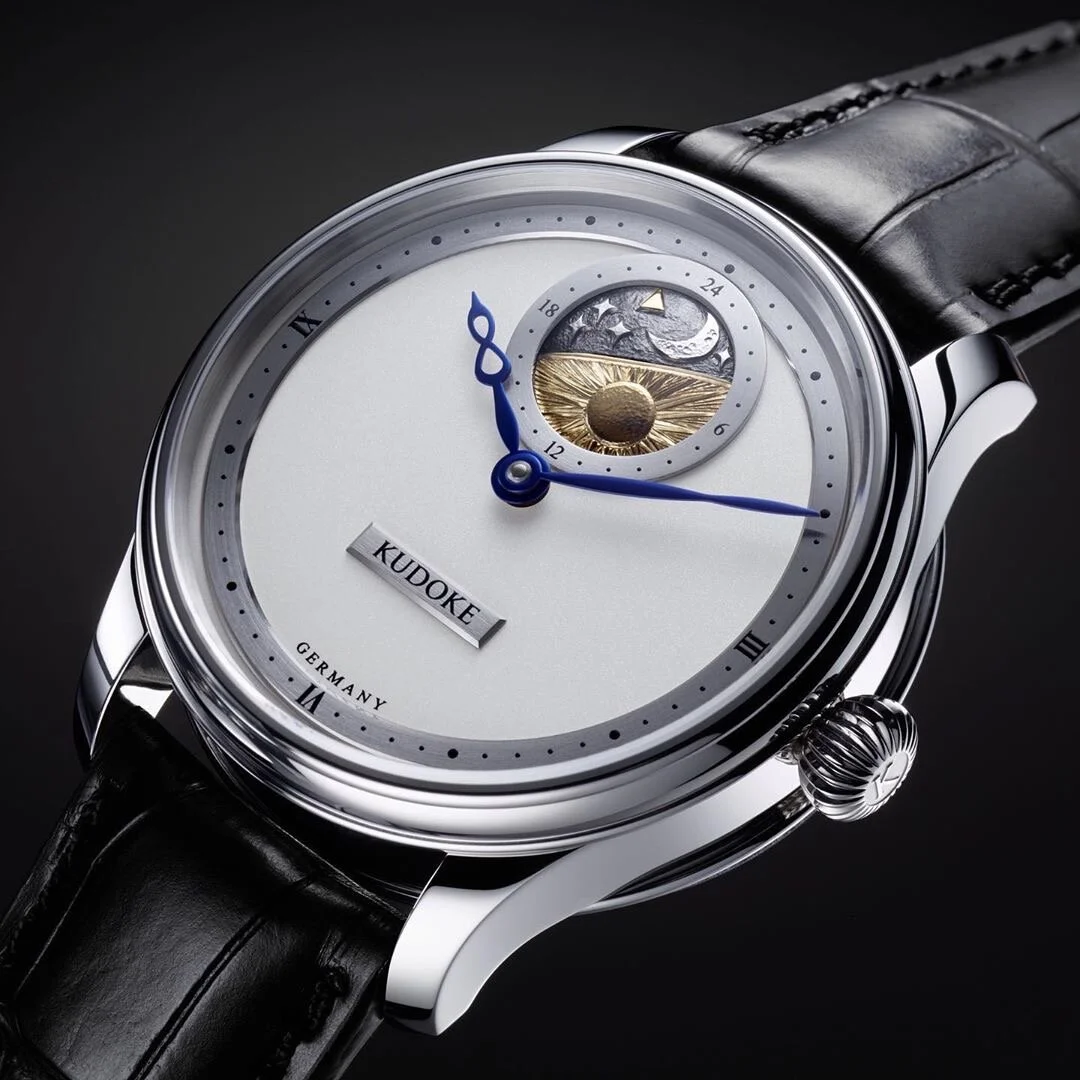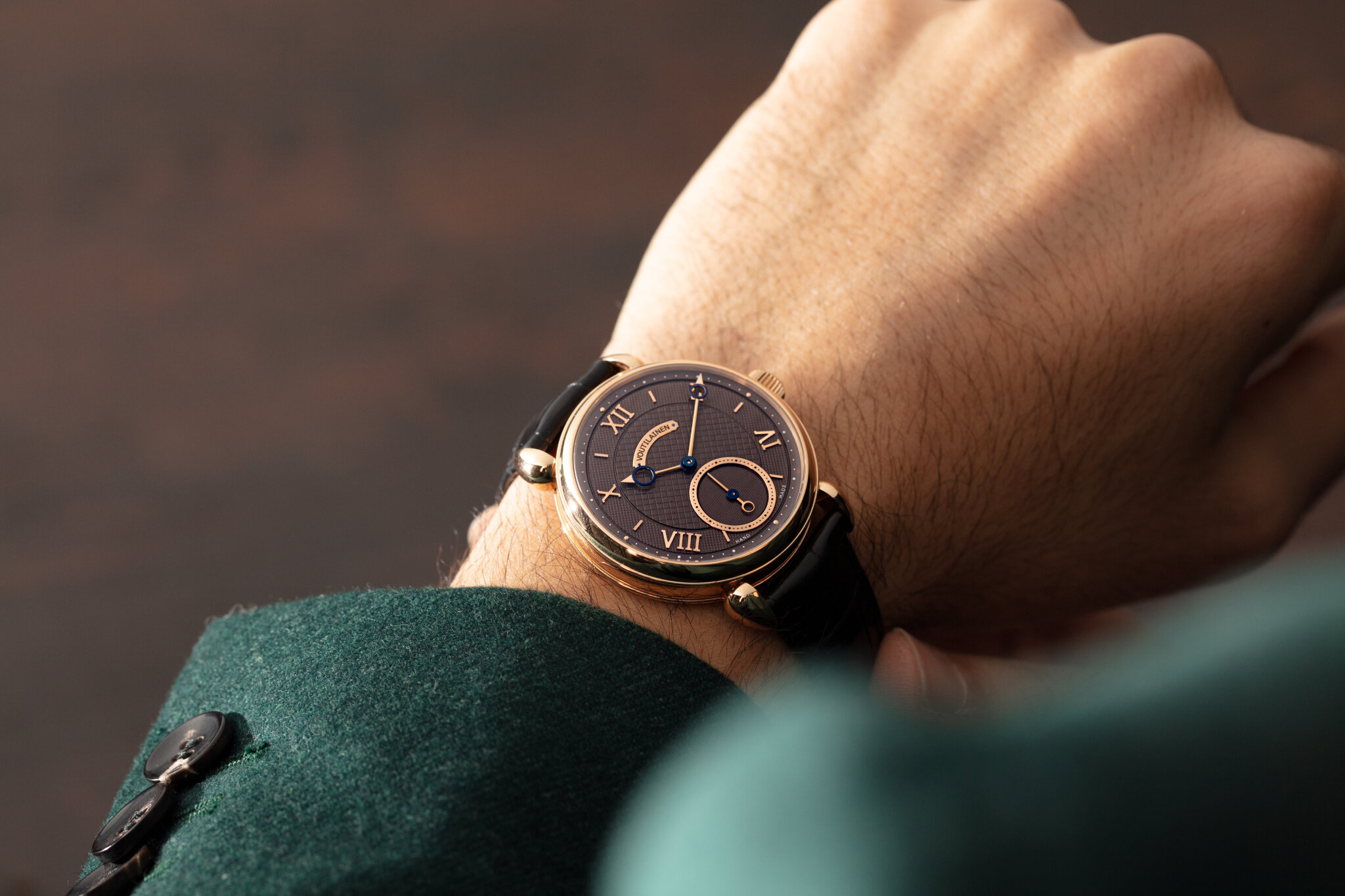A Short Guide to Buying Independent Watches
At Esperluxe, we’ve handled many of the world’s most exquisite independent watches. From Kari Voutilainen and Akrivia to Urwerk and MB&F we are very familiar with the magic that leads collectors down the rabbit hole of independent watchmaking. Doing so, we’ve had the pleasure of working with the whole spectrum of independent collectors - from the most seasoned to new collectors just dipping their toes in the ocean. So what are the real reasons to buy an independent? What patterns do we see in our business?
Before we dig into the common motivations for purchasing an independent watch, let’s first address the common points of friction. For many readers, these won’t appear foreign.
Point of Friction # 1 - “Independents don’t hold value well”
In the increasingly “value” conscious markets of today, the idea that independents don’t hold value well is fairly commonplace. Some back of the envelope math looking at independent brands on Chrono24 often leaves collectors feeling this way. Yet, the truth is a little more nuanced than the surface numbers show.
Whether it’s an independent or mainstream brand, very few watches hold their retail value and/or appreciate over time. There are a select ten or so watches from the big brands, and probably a similar number of independents that also “over-achieve” as assets. In particular, the few that do make this cut for independents are many of Philippe Dufour’s timepieces, some of Kari Voutilainen’s early work, and most recently F.P. Journe and some Urwerk models.. But here’s the truth - it’s highly unusual for a mainstream or independent brand to see secondary market prices the same as retail or at a premium. On average, so few do that it makes little sense to make this point of friction a deciding factor for purchasing a new independent.
Point of Friction # 2 - “Independents are too expensive”
It’s easy for collectors and watch enthusiasts to feel that independent timepieces are too expensive when they look at some of the more popular brands - Urwerk, Akrivia, De Bethune, MB&F , etc. All these brands generally exist in a price category that sits significantly higher than your average Rolex, or even mainstream haute horlogerie brands like A. Lange & Söhne.
Though these “haute independent” priced brands might take up a lot of attention from collectors, there are many high-quality independent brands that exist in the more “entry-level” luxury watch category. Kudoke, Ming, Habring2, Sarpaneva, SUF Helsinki, and Kurono Tokyo are all brands offering select timepieces under $10,000. The deeper one goes into the realm of independent watchmaking, the more apparent it becomes that there are phenomenal watchmakers and brands at every tier of the industry’s pricing.
Kudoke Watches Kudoke 2
Though there are morsels of truth in both, neither of these common points of friction are built on a solid foundation. And that’s not just true in theory. Collectors are increasingly overcoming these, as well as all other, doubts. Independent brands are rising, but why? And for what reasons do collectors buy independent watches? From our experience at Esperluxe, collectors are often motivated to buy independents for three reasons:
1 - Value for money
As we mentioned above, the markets today are incredibly value conscious. No one wants to feel like they’re getting a bad deal, especially when thousands are being spent. And this is partially why independent watches have gained such popularity in recent years: they’re great value for money.
It should be rightfully mind blowing to collectors that entry-level Journe timepieces are selling at close to modern Rolex Daytona prices. And this is only one of many examples - Gronefeld, De Bethune, and Urwerk are all independents with next-level creativity and craftsmanship sitting in the same price category as more industrialized manufacturers in the major watch groups.
2 - Patronage
As far as human history goes, supporting artisans has been a core part of society. Due to its long history from Ancient Greece to today, the urge to support skilled craftsmen remains quite romantic. This type of relationship to craft might be old, but it’s incredibly refreshing, especially in today’s world. And here’s why:
We generally as consumers are often so far removed from the production of our goods that their creation or creators exists in a semi-magical state. From our wardrobe to our electronics, we rarely have any idea of what goes into producing them and how they make it to us - it’s a rabbit out of a hat every time. But not with patronage. This is often a window into the secrets and world of production obscured by market-level consumption.
Patronage might start with the simple admiration for a watchmaker, brand, product. But it often dovetails quickly into learning more about how things are done, and wanting to sit close to the craftsmen and workshop. For many entering the world of independent watches, this type of relationship is a huge motivating force.
3 - Creativity
For many independents, their success is built on creativity. , De Bethune, Cyrus, MB&F, Urwerk, HYT, Sarpaneva - you name them - all create products that stand out from the rest. We mentioned value for money being one of the reasons for the rise of independents in recent years, this is the other primary driving force behind the growth. And it shouldn’t come as a big surprise.
Many of these master craftsmen and visionaries were working behind the scenes on the most innovative projects for the big brands. Kari Voutilainen and Stepan Sarpaneva worked together at Parmigiani before starting their own business. F.P. Journe, Denis Flageolet (founder of De Bethune), and Vianney Halter all worked together on movement construction for Cartier in the 1990’s. Max Busser arguably propelled the independent movement with the Opus series during his time at Harry Winston. The biggest manufacturers leaned on these masters of their craft for creativity and skill so it makes reasonable sense that they’ve done well with creativity on their own.
Max Busser, Founder. of MB&F and ex CEO of Harry Winston
For collectors looking for something different, there really is no better place to look than the realm of independent brands and watchmakers.
At the end of the day, someone embarking on the purchase of an independent watch needs to know the motivation to buy. It can be value for money, patronage, creativity-driven, as discussed above. Our intention in this guide is to provide some structure to thinking about purchasing an independent watch. It all boils down to this though: buy what you love. That’s what we recommend. Buy what you love every single time. If you hold to that principle, there won’t be regret regardless of the appreciation or depreciation of value, the shift in aesthetic trends over time, or anything else. What you love is a much less fickle beast.
Credits: SwissWatchGang






